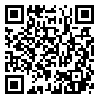Volume 8, Issue 3 (10-2024)
EBHPME 2024, 8(3): 188-194 |
Back to browse issues page
Download citation:
BibTeX | RIS | EndNote | Medlars | ProCite | Reference Manager | RefWorks
Send citation to:



BibTeX | RIS | EndNote | Medlars | ProCite | Reference Manager | RefWorks
Send citation to:
Zare Horoki A, Abolhasani M S, Salari Khah E, Heydaripour M, Zarezadeh M. Identifying Barriers to the Adoption of Electronic Prescribing: A Stakeholder Analysis Approach Using a Power-Interest Matrix. EBHPME 2024; 8 (3) :188-194
URL: http://jebhpme.ssu.ac.ir/article-1-504-en.html
URL: http://jebhpme.ssu.ac.ir/article-1-504-en.html
Ali Zare Horoki 

 , Mohammad Sadegh Abolhasani *
, Mohammad Sadegh Abolhasani * 

 , Elahe Salari Khah
, Elahe Salari Khah 

 , Moslem Heydaripour
, Moslem Heydaripour 

 , Mohammad Zarezadeh
, Mohammad Zarezadeh 




 , Mohammad Sadegh Abolhasani *
, Mohammad Sadegh Abolhasani * 

 , Elahe Salari Khah
, Elahe Salari Khah 

 , Moslem Heydaripour
, Moslem Heydaripour 

 , Mohammad Zarezadeh
, Mohammad Zarezadeh 


Shahid Rahnemoon Hospital, Shahid Sadoughi University of Medical Sciences, Yazd, Iran , sadegh.abolhasani@yahoo.com
Abstract: (680 Views)
Background: Identifying stakeholders and understanding their characteristics is crucial for achieving objectives efficiently. Concurrently, there is a growing movement towards utilizing technology, particularly electronic (e) prescribing, to enhance quality, safety, and efficiency within the healthcare system. To strengthen and support the e-prescribing system, collaboration among all stakeholders is essential. This collaboration will help establish a robust electronic health information infrastructure and improve healthcare delivery for all members of society.
Methods: This study aims to identify barriers to the acceptance of e- prescribing from a stakeholder perspective. It employs a mixed-methods approach, combining quantitative and qualitative research. Data collection involved focus groups to identify and prioritize stakeholders, while interviews were used to extract barriers. Following data collection, the interest-power matrix was utilized for analysis.
Results: The findings revealed that the primary barriers identified by stakeholders, including physicians, hospitals, and insurance companies were as follows: a lack of awareness among doctors regarding costs, deductibles, and billing; insufficient training for stakeholders on e-prescribing; inadequate infrastructure; lack of forecasting for necessary financial resources; insufficient training for relevant personnel; poor communication with insurance companies; intermittent system outages and slow performance; lack of insurance coverage for certain tests; the presence of multiple insurance systems; and ineffective communication channels between doctors and insurance agents.
Conclusion: Infrastructure challenges are significant barriers to the full implementation of e-prescribing which must be addressed. To improve implementation issues, continuous monitoring of prescription systems is recommended. Overall, it is advisable to reform the infrastructure, integrate insurance systems, adopt electronic signatures and standards for electronic prescriptions, and provide practical training. Health policymakers can facilitate the adoption of e-prescribing by taking measures to eliminate the barriers identified in this study.
Methods: This study aims to identify barriers to the acceptance of e- prescribing from a stakeholder perspective. It employs a mixed-methods approach, combining quantitative and qualitative research. Data collection involved focus groups to identify and prioritize stakeholders, while interviews were used to extract barriers. Following data collection, the interest-power matrix was utilized for analysis.
Results: The findings revealed that the primary barriers identified by stakeholders, including physicians, hospitals, and insurance companies were as follows: a lack of awareness among doctors regarding costs, deductibles, and billing; insufficient training for stakeholders on e-prescribing; inadequate infrastructure; lack of forecasting for necessary financial resources; insufficient training for relevant personnel; poor communication with insurance companies; intermittent system outages and slow performance; lack of insurance coverage for certain tests; the presence of multiple insurance systems; and ineffective communication channels between doctors and insurance agents.
Conclusion: Infrastructure challenges are significant barriers to the full implementation of e-prescribing which must be addressed. To improve implementation issues, continuous monitoring of prescription systems is recommended. Overall, it is advisable to reform the infrastructure, integrate insurance systems, adopt electronic signatures and standards for electronic prescriptions, and provide practical training. Health policymakers can facilitate the adoption of e-prescribing by taking measures to eliminate the barriers identified in this study.
Type of Study: Original article |
Subject:
Health Policy
Received: 2024/10/19 | Accepted: 2024/10/28 | Published: 2024/10/28
Received: 2024/10/19 | Accepted: 2024/10/28 | Published: 2024/10/28
Send email to the article author
| Rights and permissions | |
 |
This work is licensed under a Creative Commons Attribution-NonCommercial 4.0 International License. |




